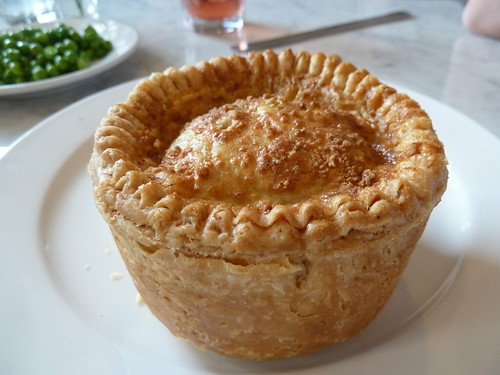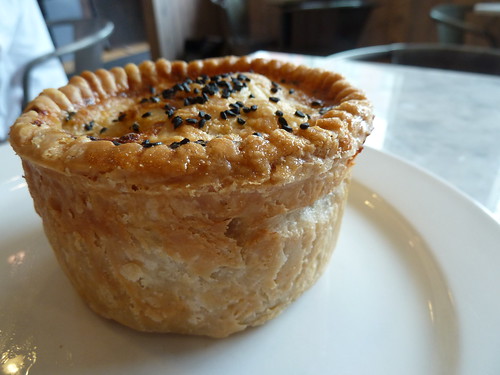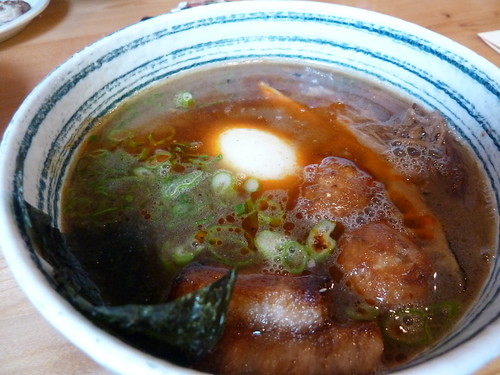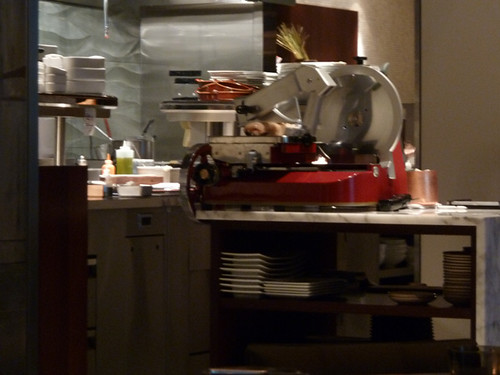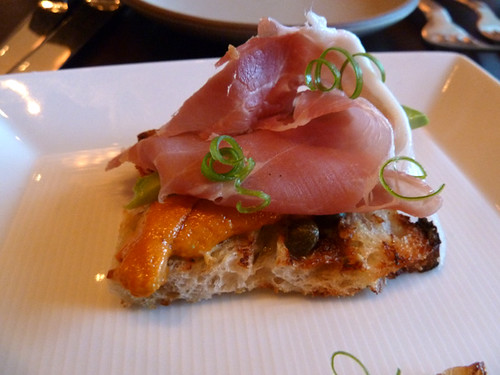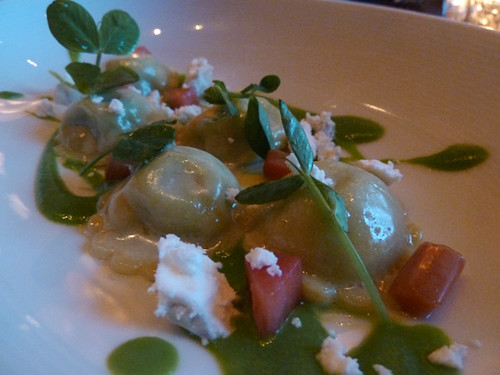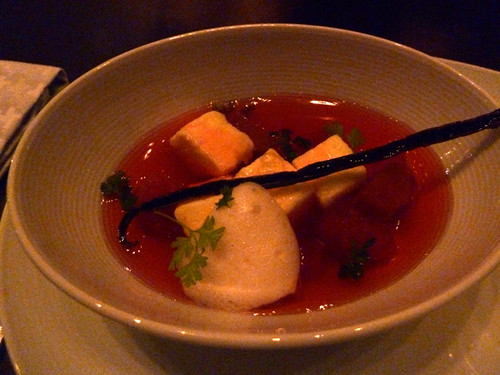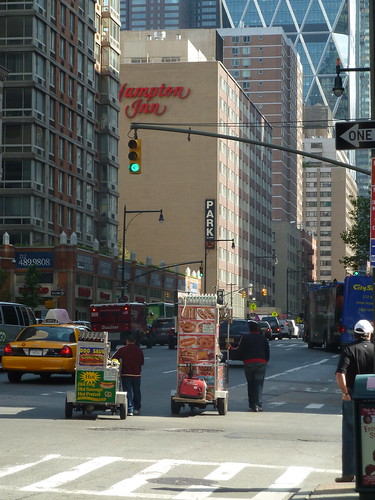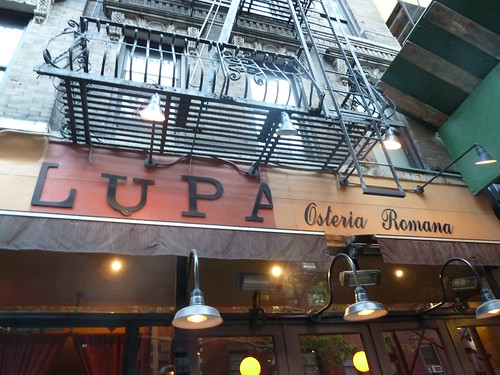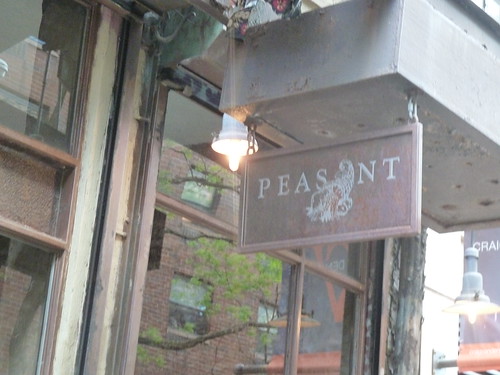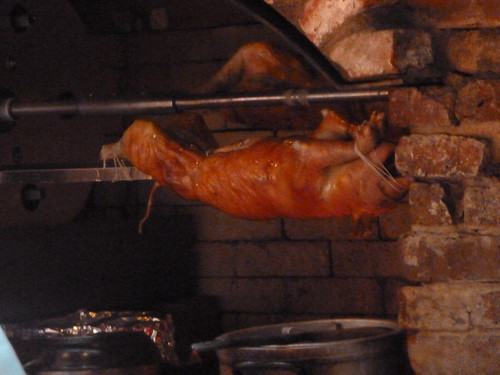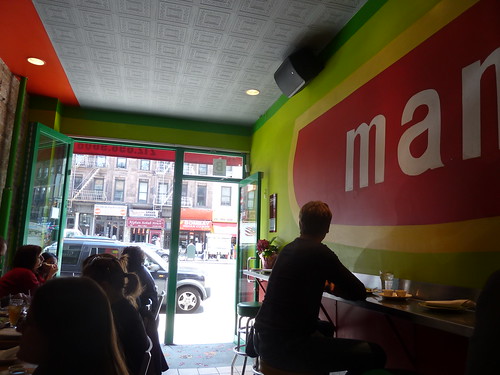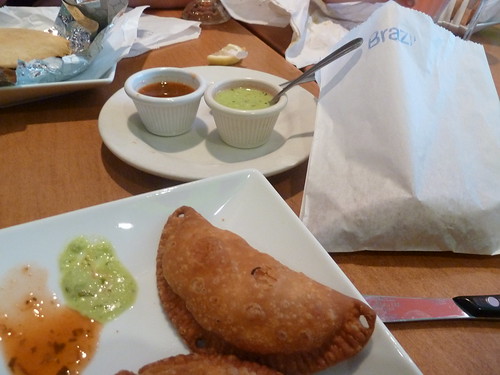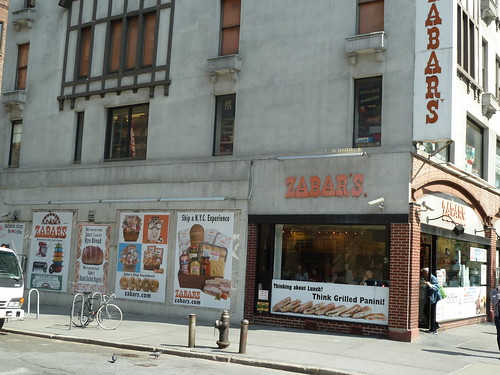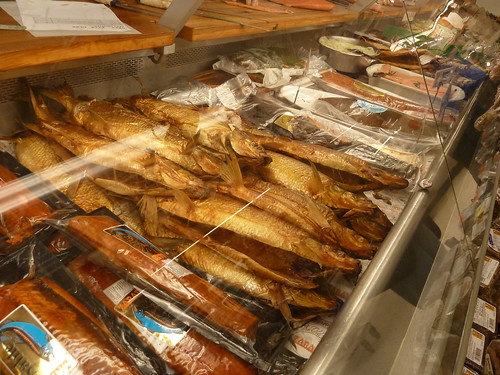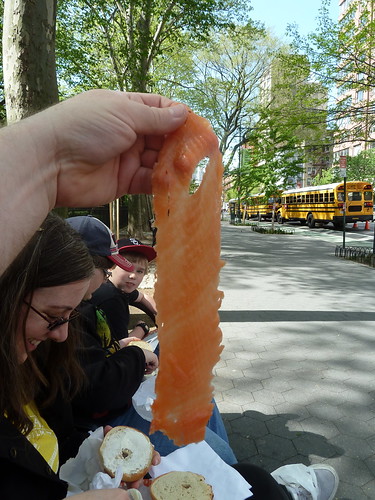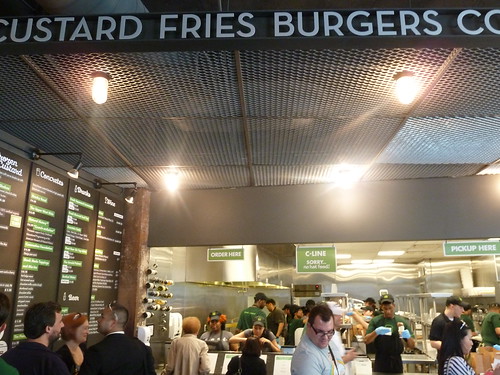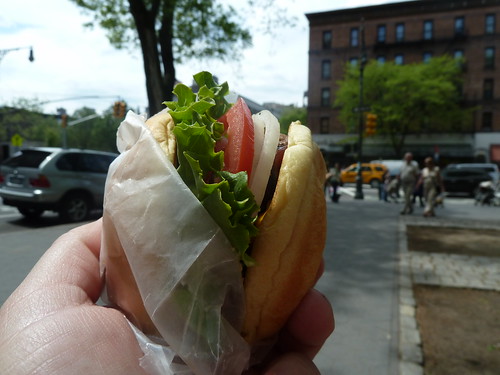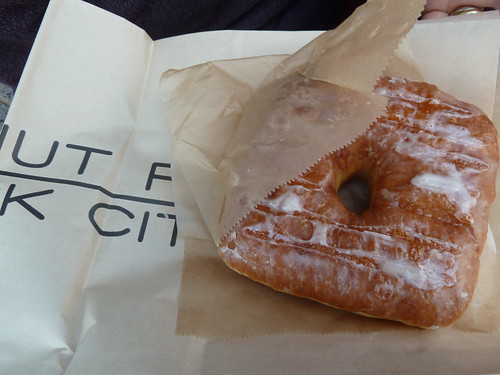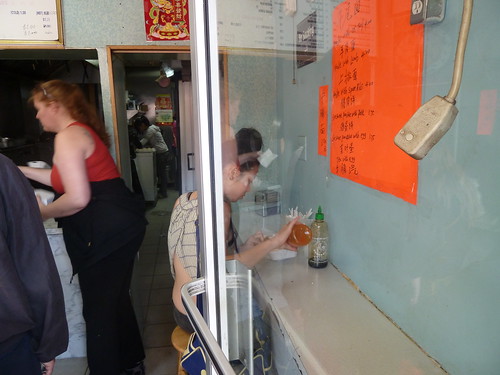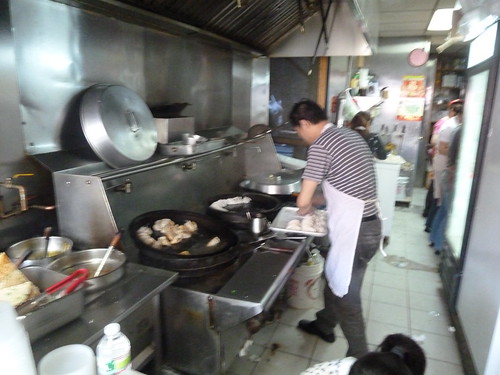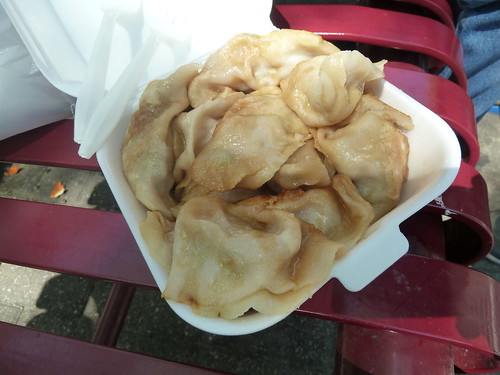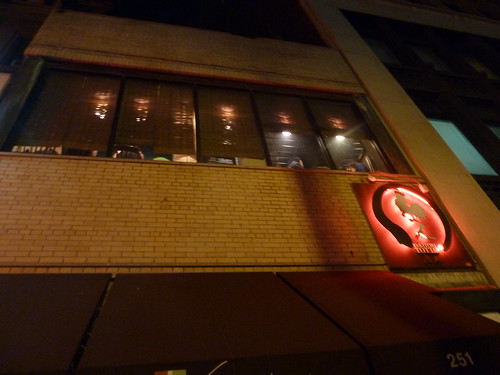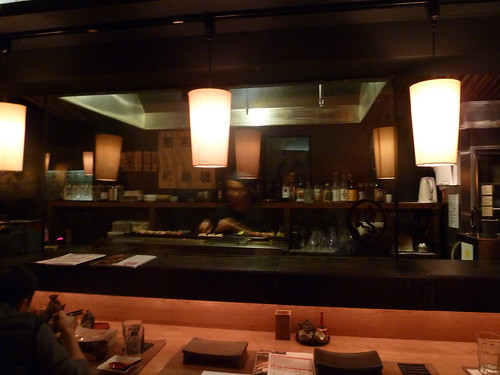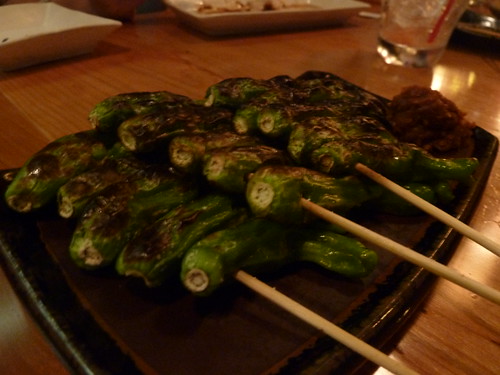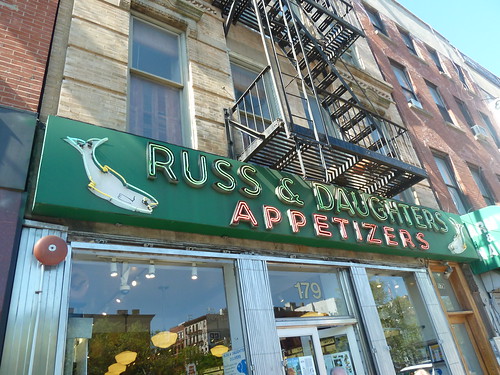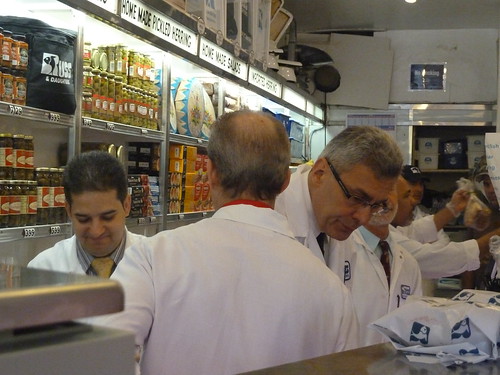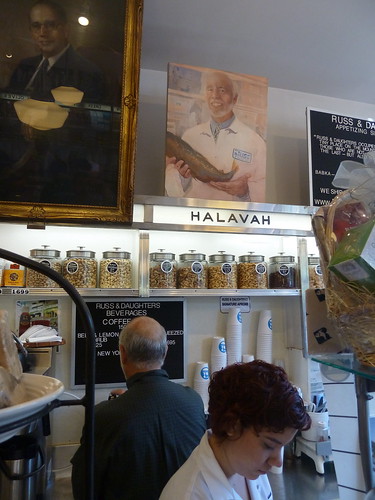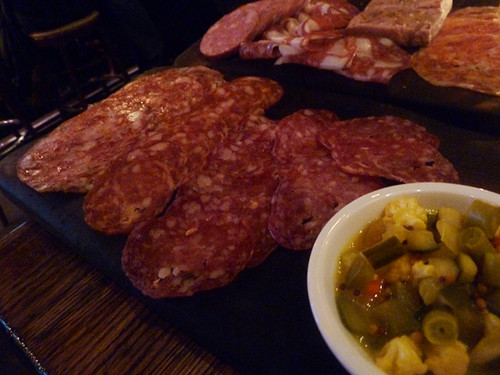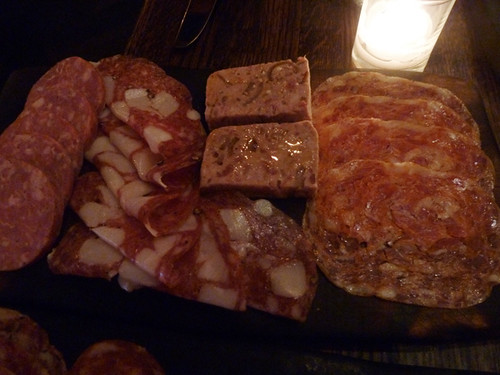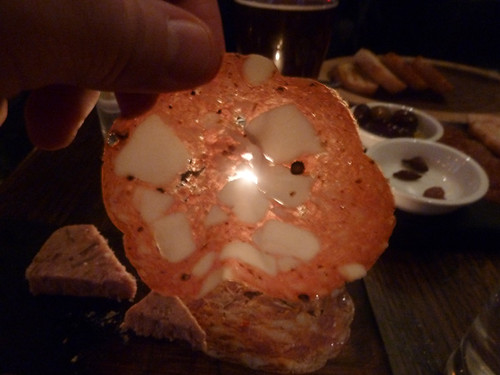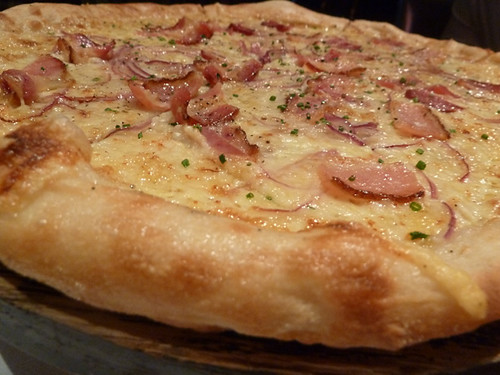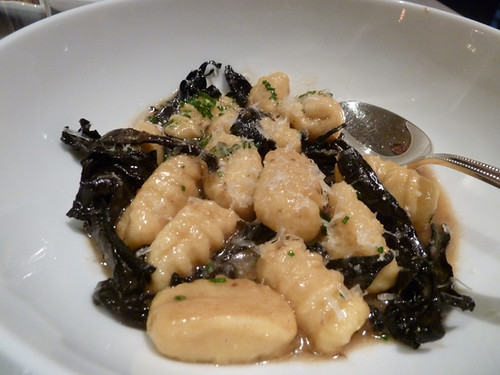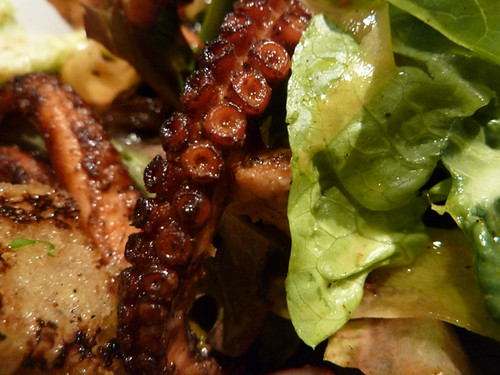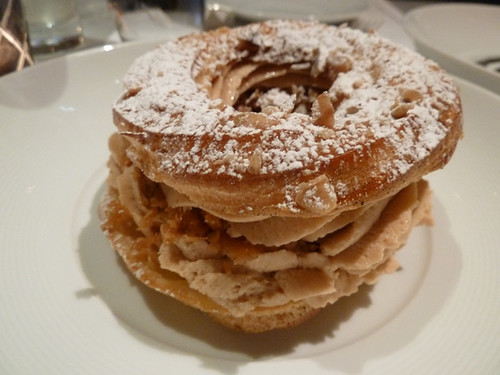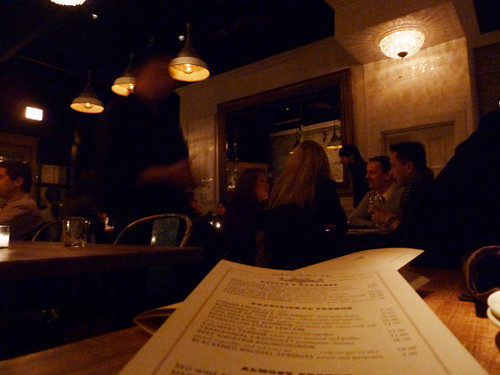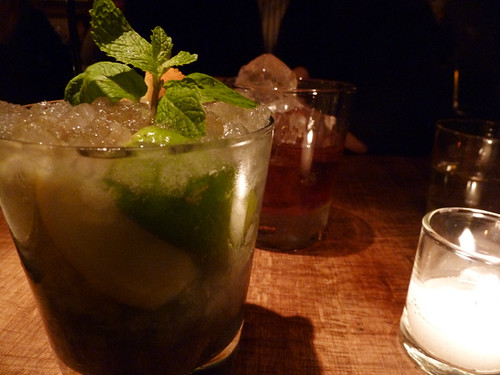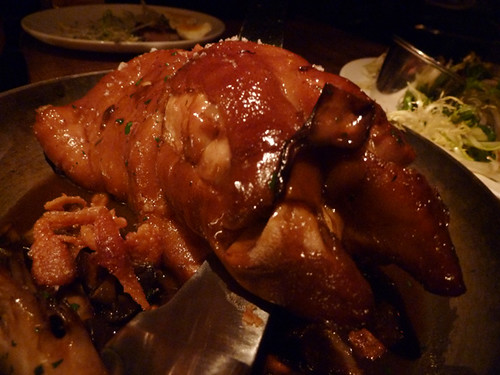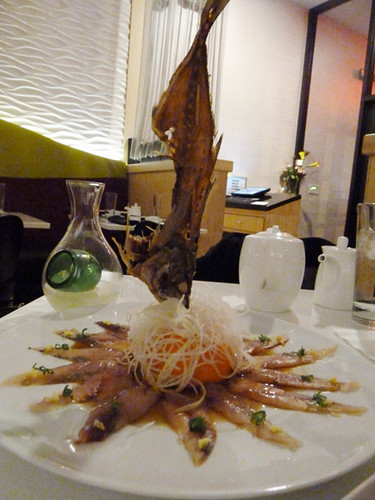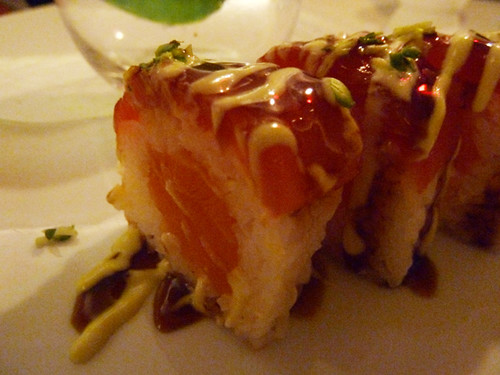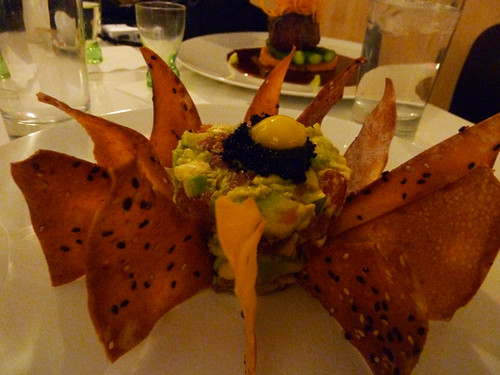Scott Harris is an American who built a fantasy Italy for Italian food. Giuseppe Tentori is an Italian who built a fantasy America for Japanese food.
This, at least, is my initial glib impression of two of the past year’s more celebrated new spots from known restaurateurs.
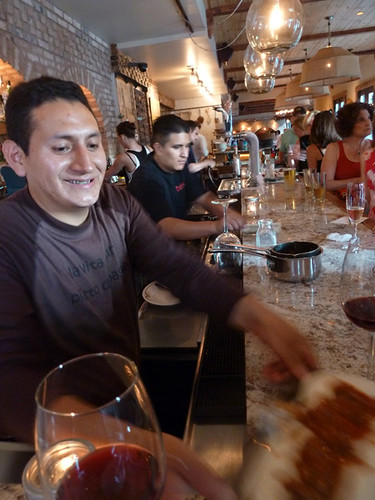
I think I’ve eaten at the Francesca chain once or twice, not in a long time, and not with enough excitement that I have hurried back. Scott Harris’ sudden intensive interest in Taylor Street— he opened Aldino’s, he closed Aldino’s, he opened Davanti Enoteca and Doughboys pizza joint, he reopened the old red sauce joint Gennaro’s and had to change its name to Salatino’s, and I don’t even remember what the story was on a Taylor Street Nella Pizzeria Napoletana— was more interesting if slightly unnerving in its drive to conquer. Except maybe for a couple of old places, Taylor Street is more a tourist strip than an authentic Italian neighborhood, so I wasn’t particularly worried that he’d lose the “character” of a street marked at one end by a giant mall-style Pompei. I liked that he was trying a lot of different things there to sort of give the plastic neighborhood a more varied character, and not just trying to launch new concepts.
Though you could be forgiven for looking at Davanti Enoteca and thinking it came out of a kit marked “Italian restaurant, model 1998.” The cutesy brick interior with pizza oven and Italian movie posters in the bathroom (I found the placement of Klaus Kinski disturbing) and so on really had the look of mall Italian. Nor was it all that impressive that before opening it, Harris and his partners and chef and taken a tour of major Italian food regions… in America. As some smartass wrote at Grub Street, “Hmm, what Italian-food-producing region of the globe is missing from that list?” Davanti Enoteca seemed like a place with its eyes lifted right to the middle.
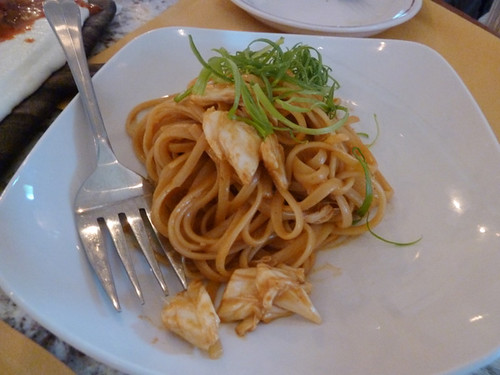
But damn if it isn’t better than its Buca di Macaroni Garden looks. (Okay, that’s a low blow, it doesn’t look like Buca, there are no framed photos of Vic Tayback and Joey Travolta.) As my dining companion observed (you can read his whole take here), they seem to have put together kind of a menu of greatest hits from Mario Batali and other name chefs here, but the quality and modest pricing certainly don’t disgrace the inspiration, far from it. The best thing we had, a seafood pasta, cost about 2/3 what a seafood pasta I had at Lupa cost, and was probably about 2/3 as good which is very good indeed. It merely had crab in it, not something as novel as bottarga, but the pasta had the right texture and the saucing was not too heavy and it was pretty much everything you’d hope it would be at that price. Other things showed similar precision— meatballs bore the heck out of me, but the ones on our plank of polenta goo had real complexity, and a dessert with farro and cream was just sweet enough and no more.
Is there some sort of genius reverse psychology behind the lines Davanti draws every night, a Vizzini-the-Sicilian level insight that “People will only go to an Italian place if they are convinced it won’t be too exotic by seeing transparently faux decor— but because they’re Chicagoans, they know that only a place serving superior food could get away with suburban-level decor, and so the decor’s fakiness is proof that the food must be for real”? It’s as good a theory as any for how such admirable food wound up in this look.
* * *
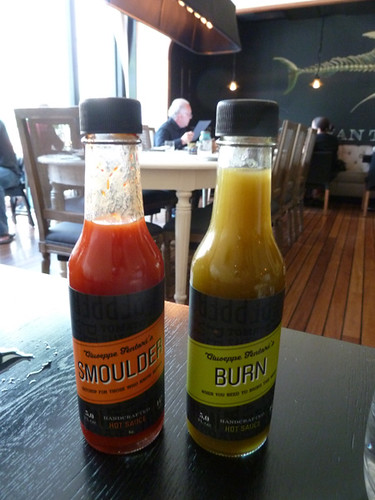
The first time I ate at Boka, I wasn’t wowed by Giuseppe Tentori’s Asian-tinged food, delicate fishes topped with citrusy notes and whatnot. The second time I was; the one thing I remember of that meal was a bento box of different Asian seafood bites that was like a magical treasure chest with one surprise after another. (I also remember that there were 12 of us and only I was so transported by it. Philistines!) So when Tentori and Boka Group announced plans to open GT Fish & Oyster Bar, other people may have seen a rival to Shaw’s for business lunch for the big fishes, but I mainly saw a chance for that delicate, Japanese-influenced hand with seafood to shine. GT may put on the upscale Yankee crab shack look (it’s actually quite smart, a cross between Ye Olde Crabbe Shanty and Little Black Dress), but at its best it’s that light hand with the delicate flavors of seafood that makes it, for a Kansan still learning to appreciate seafood in all its variety, a place I want to return for continuing education, for glimpses of oceanic transcendence.
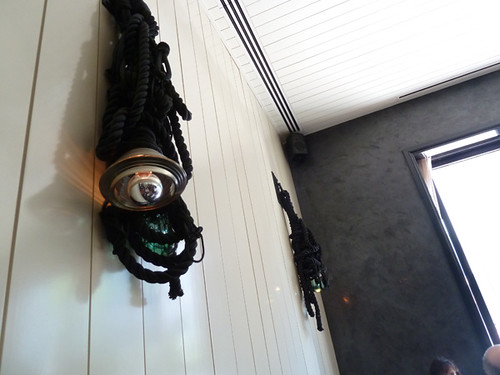
Only the chicest New England sailors use black rope.
The delicate hand was best seen in the first things we had. I keep trying oysters to see why people like oysters, and I keep getting closer to understanding; the simplicity and purity of these icy, evanescently briny invertebrates was bracing. (This is as good a place as any to disclose that one of our party knows Tentori well and we were sent a few extra things, including some of the oysters.)
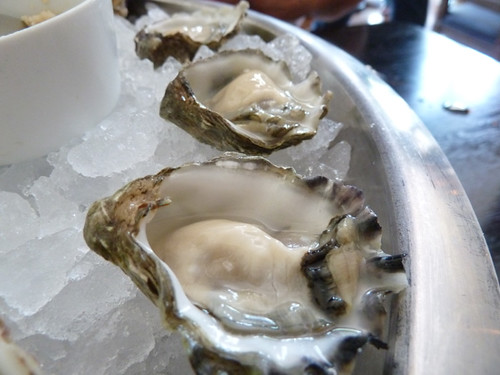
While a clam chowder, not really what I planned on having in late June until peer pressure won me over, was a beautiful example of upscale-restaurant soup, a clean broth, al dente bits of potato added just before serving, lots of clam, housemade oyster crackers that seemed to have been handcarved in the back:

Main courses I felt were more hit or miss. Many combined seafood with pasta and the pastas were admirably delicate and feathery. But I had crab-stuffed agnolotti with caviar in a coconut broth, and to me the sweet, syrupy coconut broth dominated the dish cloyingly; I had to let as much of it as I could drip off to reach what seemed a proper balance of the coconut sweetness and the salt of the caviar. You couldn’t complain about the lobster in the lobster roll, it overflowed with big, tender hunks of lobster. But it didn’t quite come together as a sandwich for me, maybe it was a little too upscale in conception for what is, after all, Maine’s answer to a Wisconsin bratwurst. Shaw’s gets the cheap eats side of the lobster roll better with a buttery toasted bun.
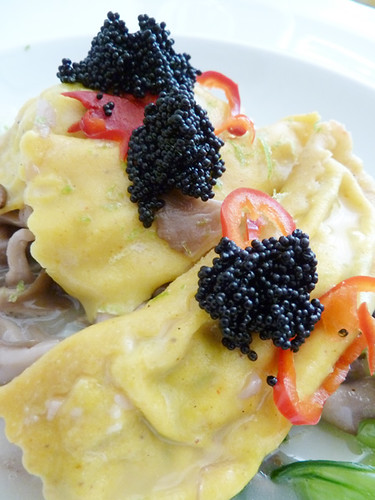
Desserts were, well, Tentorian in their similar directness and lack of frouf, like this panacotta with graham cracker crumbs and a little fresh fruit:
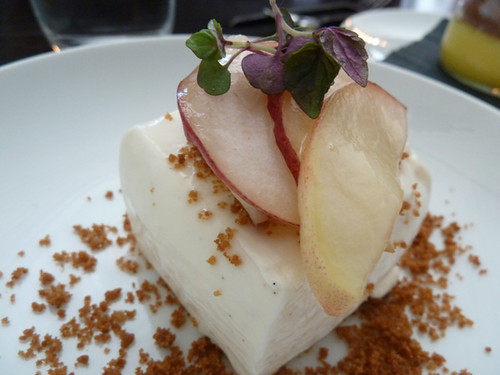
Even if I felt the meal was mixed, I’m okay with that, because I’m happy (especially at highly reasonable lunch prices) to go for the ride with Tentori and wait for the dishes that achieve that perfect zen simplicity of taste and perfect presentation. I’m also impressed that Boka Group, which could have been expected to replicate the big bold flavors and slammin’ downtown feel of its runaway hit Girl and the Goat, is capable of following it by reversing gears and opening a spot driven by subtlety and a chef’s very different personality— or that they’d even want to, instead of chasing a smash hit into the ground. In some ways they are Lettuce 2011, they have a similar conceptual golden touch at the moment, yet their places feel like their chefs and don’t have that overarching Lettuceness that turns up everywhere from Foodlife to Shaw’s. Shaw’s, with its clubby, wood and black leather big business feel, is a seafood restaurant I’ve always respected but never loved; I wasn’t its target. GT Fish & Oyster, with its lighter, more intellectual touch in every department, could even make me love oysters. Someday.
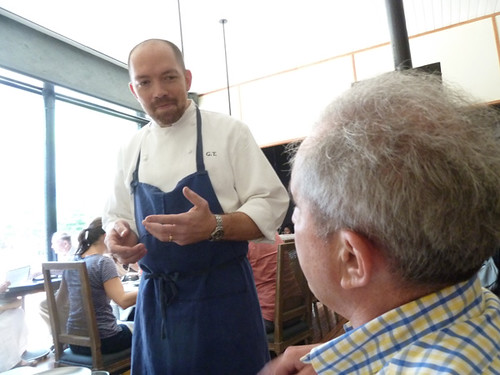
Tentori explains where seafood comes from to David Hammond.


 Posted in
Posted in 
